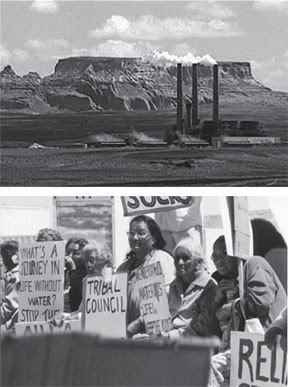(noon. – promoted by ek hornbeck)
One little, two little, three little Indians
Four little, five little, six little Indians
Seven little, eight little, nine little Indians
Ten little Indian boys.Ten little, nine little, eight little Indians
Seven little, six little, five little Indians
Four little, three little, two little Indians
One little Indian boy.
Crossposted at Native American Netroots
(My Opinion: this song is a mix of cultural hegemony, “the concept that a diverse culture can be ruled or dominated by one group or class, that everyday practices and shared beliefs provide the foundation for complex systems of domination;” and, colonial education, “the colonizing nation implements its own form of schooling within their colonies”)
One little, two little, three little Indians
Four little, five little, six little Indians
Seven little, eight little, nine little Indians
Ten little Indian boys.
“Ten little Indian boys” discovered Columbus and this was the state of the so called “New World.”
Conclusions
This evidence, drawn from history, archeology, and anthropology, speaks clearly: The New World prior to Columbus was a far less violent place than the Old World. And it can be argued that, in spite of many terrible events which followed after Columbus, the New World remained a less violent place all the way down through the centuries because of its geographical isolation from the more violent Saharasian empires…This summary suggests the general vindication of the vast majority of Native American values and peoples as standing on the peace – making side of history. Certainly, not all Indigenous American cultures fit the peaceful images given in Dances with Wolves, but it is not an exaggeration to say that the majority did.
And the Indigenous population of the so called “New World” has been significantly underestimated “for the area north of the Rio Grande;” also, a consensus of “authority” has not been reached. It is easier to sidestep the fact by saying germs did it in my opinion. Then, the “Ten little Indian boys” were victims of natural tragic causes and not victims of the extermination by the Europeans. I’ll let David Stannard talk more about “Ten little Indians.”
Native American Holocaust – Before ColumbusBy the time ancient Greece was falling under the control of Rome, in North America the Adena Culture already had been flourishing for a thousand years. As many as 500 Adena living sites have been uncovered by modern archaeologists. Centered in present-day Ohio, they radiate out as far as Vermont, New York, New Jersey, Pennsylvania, Maryland, and West Virginia.
– snip –
Overlapping chronologically with the Adena was the Hopewell Culture that grew in time to cover an area stretching in one direction from the northern Great Lakes to the Gulf of Mexico, in the other direction from Kansas to New York. The Hopewell people, who as a group were physiologically as well culturally distinguishable from the Adena, lived in permanent communities based on intensive horticulture, communities marked by enormous earthen monuments, similar to those of the Adena, that the citizenry built as religious shrines and to house the remains of their dead. Literally tens of thousands of these towering earthen mounds once covered the American landscape from the Great Plains to the eastern woodlands, many of them precise, geometrically shaped, massive structures of a thousand feet in diameter and several stories high; others-such as the famous quarter-mile long coiled snake at Serpent Mound, Ohio-were imaginatively designed symbolic temples.
– snip –
Similarly, Arawak (sometimes “Taino,” but that is a misnomer, as it properly applies only to a particular social and cultural group) is the name now given to the melange of peoples who, over the course of many centuries, carried out those migrations across the Caribbean, probably terminating with the Saladoid people sometime around two thousand years ago. By the time of their encounter with Columbus and his crews, the islands had come to be governed by chiefs or caciques (there were at least five paramount chiefdoms on Hispaniola alone, and others throughout the region) and the people lived in numerous densely populated villages both ,’ inland and along all the coasts. The houses in most of these villages were similar to those described by the Spanish priest Bartolome de Las Casas:
And were the “Ten little Indians” “just as sophisticated as the Europeans,” Ms. Widdowson?
However, some Native Americans believe their ancestors originated in the Americas, citing gaps in the archaeological record and oral accounts of their origins that have been passed down through generations.
Native Americans excelled at using natural resources and adapting to the climates and terrains in which they lived. Over thousands of years distinct culture areas developed across North America. In the Northeast, for example, Native Americans used wood from the forests to build houses, canoes, and tools. Dense populations in the Pacific Northwest exploited the abundance of sea mammals and fish along the Pacific Coast. In the deserts of the Southwest, Native Americans grew corn and built multilevel, apartment-style dwellings from adobe, a sun-dried brick. In the Arctic, inhabitants adapted remarkably well to the harsh environment, becoming accomplished fishers and hunters.
Among the several hundred Native American groups that settled across North America, there existed, and still exist, many different ways of life and world views. Each group had distinctive social and political systems, clothing styles, shelters, foods, art forms, musical styles, languages, educational practices, and spiritual and philosophical beliefs.
What about the “One little Indian boy?” He knows the Ms. Widdowsons of the world are his relatives, and must be treated with the generosity of respect by sticking to the truth. Let’s forget the song for now, recognize it excludes the girls in a patriarchal exclusionary way, and get current.
Vine Deloria Jr. in God Is Red made a critical observation during the time of the Siege of Wounded Knee 1973 if memory serves (I loaned it out). He pointed out that American society bought more copies of Dee Brown’s Bury My Heart at Wounded Knee in lieu of being more aware and involved in the current situation. Overall, isn’t that still true today?
Why was there wide awareness and support for the Tibetan Monks in the general American public, and little awareness and support for American Indians protesting the Longview Hog Farm in the general American public?
Native People are gathering to protest the construction of Longview Hog Farm near a Headstart Preschool facility that hosts Native children. They are standing in protection of the children fully aware of the environmental and health hazards hogfarms produce. South Dakota State Police violated their jurisdiction to arrest protesters peacefully gathered on a Federally Controlled BIA Road. A protester was struck by a frontloader and had to be medically evacuated by ambulance. Second Day begins as more Police aggression is anticipated and more illegal arrests may take place. Once again the “Indians” are in the way of “progress”.
And now there are “two religious rights cases on Supreme Court’s horizon.” Can an Eagle be taken for the Sundance and is it respecting religious freedom to put recycled urine and feces or “reclaimed sewage” on a sacred mountain?
Quite frankly, either the Supreme Court is for the cultures and spiritual practices surviving, or they are against it. “You cannot damage the land without damaging those who live upon it” and the Sundance, which used to be illegal, is the most sacred of the seven rites. But doesn’t this also shed light on why there was wide awareness and support for the Tibetan Monks, and little awareness and support for American Indians protesting the Longview Hog Farm? Sometimes things are simple.
Everyone was for the Tibetan Monks, which is why they had so much support. Few people were supportive of the Native People who protested the farm, because if the monks had been in South Dakota – nobody would sell the farm. It’s always about the land, isn’t it?
Indigenous Peoples Caucus meets in Geneva“We are finding that the primary reason the U.S. did not sign on (to the Declaration on the Rights of Indigenous Peoples) is the provisions on self-determination and land ownership,”
The decolonization process
In order to eliminate the harmful, lasting effects of colonial education, post-colonial nations or territories must remove the sense of nothingness that is often present. Thiong’o insists that “To decolonize our minds we must not see our own experiences as little islands that are not connected with other processes” (The Global Education Process). Post-colonial education must reverse the former reality of “education as a means of mystifying knowledge and hence reality” (The Global Education Process). A new education structure boosts the identity of a liberated people and unites previously isolated individuals.
Lastly, “To decolonize our minds,” quit teaching this song to children.
There was the denazification of Germany, and the United States needs to decolonize itself with “a new education structure” teaching the American Indian and the Native Alaskan are not vanished races,
unless of course – it doesn’t want to.
Sad indeed, is this need to protest for the most basic human rights of “self-determination and land ownership.” Sadder, is that Americans overall support protesters there, and ignore what goes on here. But then again, it’s always about the land, isn’t it?
America’s West Bank: McCain’s Forced Navajo RelocationConfused yet? That’s what this “legislation” was supposed to do. It was supposed to hide McCain’s involvement to steal land, and the violations of human rights remains hidden as well to the overall public. “In 1996, Congress passed a law endorsing a 75-year lease arrangement that would allow a few of the families to remain as tenants on the land. The law sanctions the relocation of families not eligible for these leases and forces the families who sign the leases to live without benefit of civil and religious rights exercised by other Americans” the UN told us. Also, PL 104-301 tells us that “the number of homesites available for lease is 112,” yet adds, “additional homesites may be made
available subject to agreement between the Hopi Tribe and homesite applicant.” Quite generous in light of the forced relocation of 10,000 Navajos. One forced relocation is a tragedy, but apparently 10,000 or more is just a statistic. The UN also told us about the loss of voting rights, the physical harassment of elders, intimidation tactics, that armed rangers visited elders at their homes and stole their property, and that their sacred sites were bulldozed – including their graveyards.This, has been America’s West Bank:
…human rights violations and an institutionalized racism against indigenous peoples is alive and thriving in the United States…
Black Mesa project controversy risesBy Carol Berry, Today correspondent
Story Published: Oct 26, 2008
Story Updated: Oct 28, 2008
BLACK MESA, Ariz. – A push to approve a Peabody Western Coal Co. project in northern Arizona may be dividing the Hopi Tribal Council and fueling an attempted ouster of the tribal chairman.
– snip –
“They want to get it through before the presidential election and before a new administration takes office,” Nuvamsa said by telephone.
It’s always about the land, isn’t it?




8 comments
Skip to comment form
Author
Author
http://www.dailykos.com/story/…
…when you have stolen something, you have to explain why the victims didn’t deserve it.